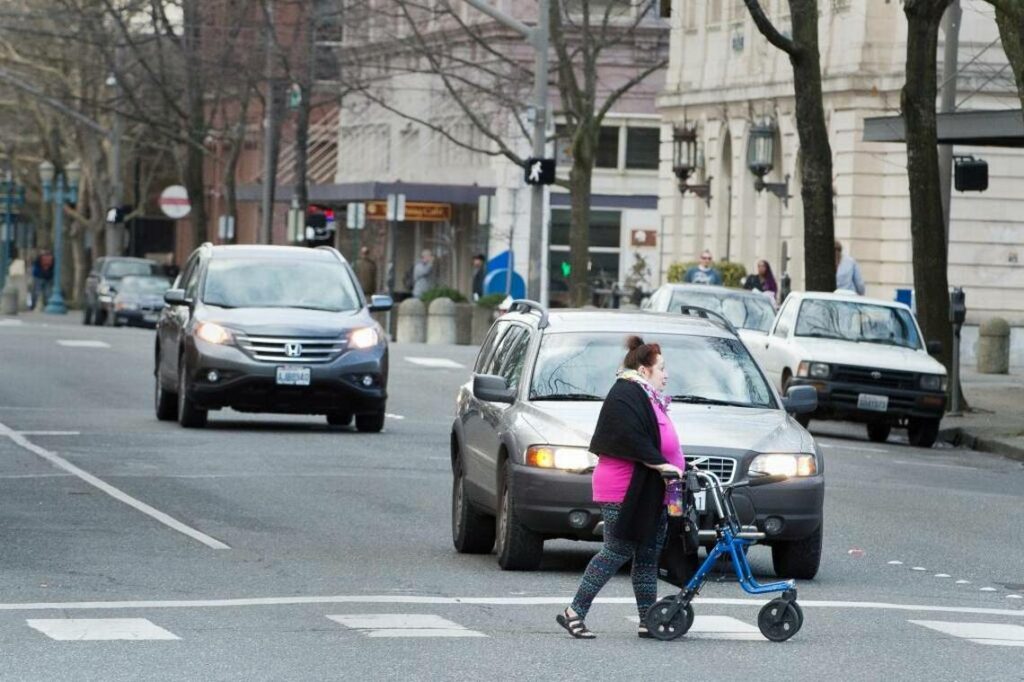Even though pedestrians have the right-of-way in most cases, they may still be held responsible if they cause an accident with a vehicle. The vehicle driver is likely to be held accountable when considering traffic incidents involving automobiles and pedestrians and injuries sustained by those hurt while crossing the street in Atlanta. An old saying goes, “the pedestrian has the right of way,” but that’s not always true. When a pedestrian is involved in a car collision, the pedestrian may be somewhat at blame. Continue reading for more information.
ESTABLISHING LIABILITY IN A PEDESTRIAN-CAR COLLISION
Assume a vehicle hits a person. You subsequently tell a friend: “Pedestrians were to blame. He spotted an ice cream truck and rushed out into traffic!”
An injury claim resulting from a traffic collision may be similarly assigned blame. Unlike a witness, jurors or insurance adjusters typically decide. That includes the pedestrian and driver’s accounts, relevant laws (such as speed limits), policy conclusions of e reports, and occasionally expert evidence.
Suppose the vehicle is obviously at fault in a pedestrian collision. In that case, the pedestrian may generally sue the driver and the driver’s insurance company for damages, and the insurance company is unlikely to object—though the first settlement offer may be low, so you may need to counter-offer.
Assuming the pedestrian is entirely at fault for the collision, the pedestrian may not claim injuries, but the motorist may.
PEDESTRIAN ACCIDENTS: IS THERE JOINT OR INDIVIDUAL LIABILITY?
Even if a pedestrian is partly to blame for an accident, the car’s driver is likely to bear some responsibility as well. The motorist may not have been driving at a reasonable pace or might have been distracted, making it impossible for the vehicle to stop in time for a jaywalker.
Suppose a pedestrian and a motorist are equally at blame. Shared blame laws vary from state to state, but they are always based on two legal concepts: comparative carelessness or contributory negligence.
- Relative Carelessness
A comparative negligence rule is used in most jurisdictions where an injured party bears some responsibility for the underlying accident’s cause or contribution. To be eligible for compensation under a “pure comparative negligence” criterion, an injured person must have contributed to the accident somehow. However, the injured person’s personal damages award (the compensation they may get) is lowered by the same proportion.
Consider a scenario in which a motorist was impaired by alcohol and was driving a car. A texting pedestrian crosses an intersection with a “Walk” signal. When the driver’s car collides with a pedestrian, people are hurt. “Modified comparative negligence” is a different take on comparative negligence that some people like. The wounded party may sue anybody at fault for the accident in jurisdictions where this law is followed, as long as the injured party bears less than 50% (the amount varies somewhat) of the responsibility.
- Ignorance That’s Partly To Blame
Only a few states (including Alabama, the District of Columbia, Maryland, and Virginia) have retained this antiquated (and severe) regulation.
Contributory negligence is a one-size-fits-all approach. As soon as you’re judged to be partially responsible for an accident, you won’t be allowed to sue the other person for compensation.
FINAL VERDICT
Car accidents involving pedestrians often result in a disproportion of damage, with the pedestrian suffering severe injuries. At the same time, the vehicle sustains little or no wear, and no one in the car is injured. Pedestrians are particularly vulnerable on the road because they lack the same level of protection as those in a car.
That, along with the widely held belief that “Pedestrians always have the right of way,” leads some people to believe that a pedestrian cannot be held responsible for a vehicle collision. But this isn’t always the case. We spoke about when a pedestrian is entirely or partly at blame for a mishap in this post.
